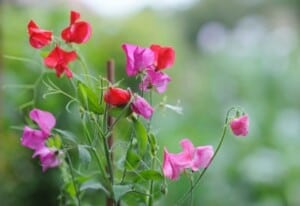Who hasn’t received a velvety, red-leafed poinsettia as a gift or purchased one or more for their home during the holiday season? And how many of those poinsettias survive the year to flower again next holiday season? Hmmm…
Long ago and far away when I was a school teacher, I was given a beautiful poinsettia by one of my darling, young students. It had obvious problems, planted in a small plastic pot filled with a dry concoction dominated by Styrofoam chips. Obviously, its grower didn’t intend for it to last into the new year. Ignorant of growing poinsettias but generally knowledgeable about what plants needed, we repotted it on the solstice, thereby saving the plant but losing its blossoms.

A BESTSELLER!
Sprayman
You and your plants are gonna' love the award-winning, super-chic design.
Learn moreWith the right gardening products growing indoors is easy! At Planet Natural we stock everything you need to guarantee your prize-winning houseplants are the envy of the neighborhood!
With its root ball in a big new home filled with nourishing, compost-laden soil mix, our poinsettia thrived, though it never again blossomed. It seemed to grow best during fall and winter and over the years became something of a twisted bonsai with its circling branches decorated with spare green leaves. Placed in a west facing doorway that was seldom used, it cast amazing shadows on our modest living room’s eastern wall as the setting sun filtered through its branches.
With a little more poinsettia-specific knowledge, we could have kept that plant alive and had it blossom every year. Poinsettias are tropical plants and their care must mimic the conditions in their natural homes. There are plenty of good web sites that discuss the care of poinsettias and we’ve taken what we’ve learned and brought it here. First of all, I made a mistake immediately transplanting that long-ago poinsettia. If I’d waited until late spring the following year, watering the plant sufficiently into January and then cutting back during the dormant season, it might have done better. As it was, I was lucky the thing survived. That was probably due to the moist climate where I lived (annual rainfall on that part of the Olympic Peninsula was over 50 inches a year; sunlight was the problem). Poinsettias like humidity.
The other thing I didn’t know to do — but I should have — is to snip the plants stems, especially those with red leaves, back mercilessly, say four inches, in the middle of spring (early May in most temperate locations). Most poinsettia growers recommend trimming the stems back again another inch in late July. Makes sense; something like deadheading flowers in your garden to keep them blooming.

You can set poinsettias outside in a shady place during the summer. Just remember to keep them watered so there’s no die back. To encourage blossoming, you need to trick your plants into thinking the sun is at its least conspicuous phase. The plant needs about 10 weeks of no more than eight hours of daylight to begin bringing forth red-blossom “leaves.” So around October 1st, start making sure your plant is in a dark place from, say, 4pm to 8am or whatever best fits your schedule. By the second week of December, you and your family should be seeing red! (heh, heh… don’t forget that poinsettias also come variegated and in a luscious white).
The University of Illinois Extension has a wonderful poinsettia site that discusses its history as well as its care. Here are suggestions for buying a healthy poinsettia. Other worthy websites are here and here. Last question: are poinsettia poisonous? Apparently not, despite the popular misconception that they are.











